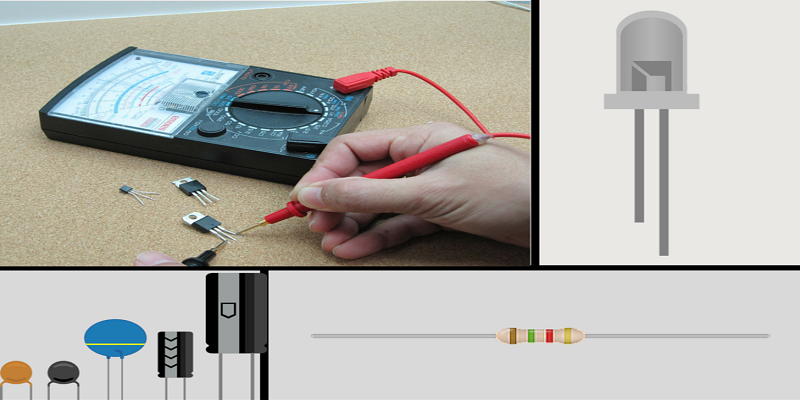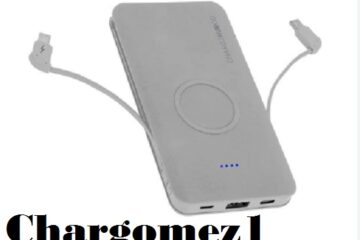If you are planning to purchase a product, you will need to know the difference between a device and a component. The difference between the two is that a device is a product that is designed to help you detect and respond to an occurrence. A component is something that is designed to enhance the performance of a device.
Electronic devices are the study of the behaviour of electrons
Electronics is a branch of physics and engineering that studies the behavior of electrons in a variety of environments. It includes digital electronics, analog electronics, micro electronics, and semiconductors.
The basic principle behind the flow of electrical current is that a positive electric charge is given to an atom and a negative charge is given to an electron. Electron theory explains how this occurs.
Electronic devices control the flow of these electrons through metal conductors, through semiconductors, or through vacuum tubes. These devices include resistors, diodes, transistors, and rotors. A simple circuit involves a voltage source, a conducting path, a load, and a regulator. However, the complexity of an electronic circuit is dependent on the application.
Transistors are tiny devices with three terminals that have revolutionized the field of electronics. They have become the basis of all modern electronic circuits. Many are used as switching devices, amplifiers, and even relays.
Diodes are electronic switches that allow current to pass in one direction. Most diodes are made of semiconductor material.
An integrated circuit is a system of semiconductor components that are assembled in order to respond to variable voltages. Some commonly used electronic devices are transistors, capacitors, and inductors. Capacitors work like small rechargeable batteries. In addition, they store charge electrostatically.
Transistors have been around for over five decades and are now the basis of most modern electronic circuits.
Electronic devices are designed to keep components safe in situations where there is an excessive amount of temperature
Thermistors, inductors, resistors, capacitors, transistors, and diodes are some of the components that are used to keep electronic equipment running. These devices are designed to prevent overheating and other malfunctions.
Relays are a type of device that works by electromechanically opening and closing the circuit. They are also used to control high electric currents. When a relay fails, it can interrupt the circuit. This is important to ensure safety. A short circuit can cause serious accidents or even fatality.
Capacitors are like small batteries that can charge and discharge in a short period of time. These can be used to store power for microcontrollers. In addition, they suppress radio frequency interference.
Transistors, on the other hand, are semiconductor devices that act like switches. These devices have revolutionized the field of electronics. Today, they are mostly made of silicon. However, they were first built with Germanium. Silicon transistors are more temperature tolerant.
Resistor-capacitor arrays (RC networks) are also known as RC filters. These are used in automated equipment such as elevators and machine tools.
Diodes are one of the simplest components of an electronic circuit. Diodes, or junction diodes, allow the flow of current in one direction only. They can be manufactured in a number of different shapes and are usually semiconductor material.
Inductors, on the other hand, are bulky pieces that occupy space. They can be made of ceramic, glass, plastic, or air.
Electronic devices are used to start, stop, and/or control the performance of a motor
A motor controller is an electronic device that controls the performance of a motor. It may be either manually operated or automatically controlled. The motor control system connects the motor to a power supply and detects the polarity of the power supply. It can also be used to regulate the speed of the motor.
One common type of motor controller uses transistors. Transistors are small semiconductor devices with three terminals. They are widely used as switching devices and amplifiers. Using transistors in a motor control system allows a user to vary the rotational speed of a DC motor.
Transistors are very useful for motor control because they can act like relays without moving parts. When used in a DC motor circuit, a half-on transistor only delivers half of the supply voltage to the motor. This provides a smoother progression of current.
Often, a motor controller is paired with a solid-state device to provide precise control of the current. Typical positional “feedback” devices include encoders and resolvers.
Another control method is pulse width modulation. A high-frequency pulse triggers a higher average voltage at the motor terminals. As a result, the motor speeds up. However, these high-frequency pulses can be difficult to implement in small DC motors.
Several DC motors are equipped with a feedback system that monitors the rotor’s position. These feedback systems are generally encoders, but some motors may use optical sensors instead.
Electronic devices are used to detect and respond to the presence of a magnetic field
A magnetic field is a physical phenomenon that is associated with living organisms since the dawn of the Earth. These fields are created by the transmission of signals through the nervous system. The intensity of a magnetic field is expressed in terms of amperes per meter (A/m) or oersteds (Oe).
Electronic devices are used to detect and respond to the presence of a magnetic field. Such devices are also designed to protect electronic instruments from short power outages and surges. They are categorized into three families.
Devices in this family are typically designed to be inserted between a supply source and load. This allows the device to remove unwanted frequencies from circuits. Generally, devices of this family produce a steady, clean output.
These devices are programmable and are comprised of an array of input/output blocks. Programmable devices may include macrocells and flip-flops.
These devices are often used in circuits with low power. It is common for these devices to work in conjunction with ionizers. Ionizers are used to change the level of air particles in order to transfer signals between circuits.
In addition to these devices, there are also many other types of electrical test devices. They can test for voltage, resistance, capacitance, and frequency.
There are also some specialized cards, which contain embedded microprocessors. For example, infrared devices are frequently used in remote controls. Some of these devices transmit signals in 300 GHz and 400 THz.
Electronic devices are used to enhance thermal transfer between heat sinks and components
Electronic devices generate a significant amount of heat during their operations. The most common way to dissipate this heat is through a heat sink. In addition, some electronic components can dissipate the heat by themselves.
The most effective way to dissipate the heat generated by a device is through two-phase forced convection cooling. This type of cooling is especially important with the trend towards miniaturization.
Thermal management has become a big problem in the electronics industry. Failure to effectively dissipate heat can reduce the lifespan of a device and its reliability.
Heat can be transferred through three main mechanisms: convection, conduction, and radiation. Each method has its own advantages and disadvantages.
One major advantage of using a heat pipe for cooling a device is its ability to move large amounts of heat. A typical heat pipe consists of a sealed hollow tube made of thermoconductive metal. It also has a wick to return the working fluid.
Another benefit of a heat sink is that it can improve the longevity of an electronic component. For instance, a heat sink can significantly increase the lifetime of a semiconductor device.
Thermal management is a huge issue in almost every branch of technology. Professional electronics, consumer electronics, automotive electronics, and medical electronics are all affected by thermal management. These types of technologies are prone to overheating, which may lead to failures.
Electronic devices are used to detect and respond to the presence of a gas
A sensor is a type of electrical device that detects and responds to the presence of a medium. This medium could be a gas, metal, dust or physical contact. They are also used to measure the amount of force or the force per unit area.
The devices that are used for this purpose are usually standardized pluggable. These devices are used in control systems and I/O systems. When the sensors detect the presence of a gas, the signal that is sent to the device is converted into a modulated wave. It is then turned into an output that is used in the circuit.
Devices that are used for this purpose include temperature sensors, which work by absorbing and dissipating heat. They also detect humidity and motion.
Sensors are usually made of sensitive materials. They can be used to operate in electromagnetic fields and with optics.
Other types of sensors include a gas detector. Detectors can detect the presence or change in the amount of a gas or a chemical. Typically, a pressure sensor measures the amount of force per unit area in liquids and gases.
Integrated circuits combine a processing unit with peripherals, memory, and other features. Integrated circuits are designed to be very accurate and stable.
Electronic devices are also designed to keep an electronic circuit safe from overvoltage or surges. To prevent overvoltage, devices with multiple output connections are used.


